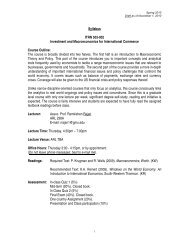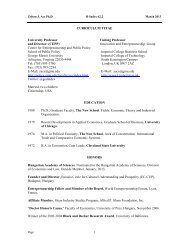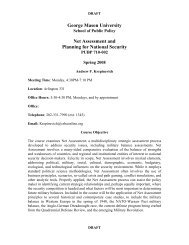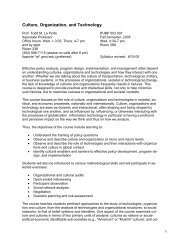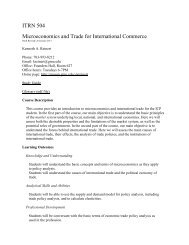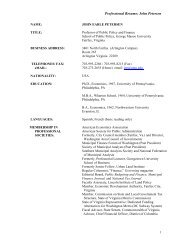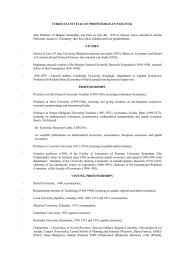Coordinating critical transportation infrastructure vulnerability
Coordinating critical transportation infrastructure vulnerability
Coordinating critical transportation infrastructure vulnerability
Create successful ePaper yourself
Turn your PDF publications into a flip-book with our unique Google optimized e-Paper software.
Harness the scientific knowledge and tools to counter terrorism<br />
Emergency Preparedness and Response<br />
Improve tactical counterterrorist capabilities<br />
Enable seamless communication among all responders<br />
Prepare health care providers for catastrophic terrorism<br />
Prepare for chemical, biological, radiological, and nuclear decontamination<br />
These 14 WMATA-relevant DHS initiatives will be used in Section 6.2.2 to illustrate a methodology<br />
for prioritizing WMATA’s projects and initiatives in support of DHS’s efforts.<br />
Goals of Prioritization<br />
The National Strategy for Homeland Security states that “decisions on homeland security activities and<br />
spending must achieve two overarching goals: to devote the right amount of scarce resources to homeland security and to<br />
spend these resources on the right activities.” This process of prioritization, and the methodology<br />
prescribed in this chapter, focuses on the second goal. The National Strategy describes this goal by<br />
explaining that “because some activities might achieve substantial benefits at low cost, while others result in minimal<br />
gain at a high price, resources should be shifted to their most ‘productive’ use.” While Section 6.1 described the<br />
use of measures like Return On Investment (ROI), Cost-Benefit Ratios (CBRs), and Net Present<br />
Value (NPV), there is another way to analyze projects and initiatives against an organization’s goals<br />
by using a process called a Goals Achievement Methodology.<br />
6.2.1 Goals Achievement Methodology<br />
The Goals Achievement Methodology enables competing projects to be compared against each<br />
other by using an established set of criteria. Commonly used criteria consist of features like lives<br />
saved, reduction in travel time, mean time between failure, mean time to repair, and even the<br />
quantitative measures described in Section 6.1 (e.g., ROI, CBRs, and NPV). A more useful<br />
application of this methodology, however, is to compare projects against the organization’s goals,<br />
and to evaluate each project’s ability to impact those goals. The next few sections describe this<br />
approach and provide some sample data to illustrate how this approach is used.<br />
Goals Achievement Methodology Template<br />
This section describes the goals achievement template that has been prepared for WMATA using<br />
the National Strategy for Homeland Security’s “<strong>critical</strong> mission areas” and “major initiatives” as<br />
evaluation criteria. Table 6.1 illustrates the “<strong>critical</strong> mission areas” and “major initiatives” along the<br />
left and placeholders for WMATA’s projects and initiatives across the top.<br />
PUBP 710/722 Page 33 of 60<br />
WMATA Case Study June 5, 2003



